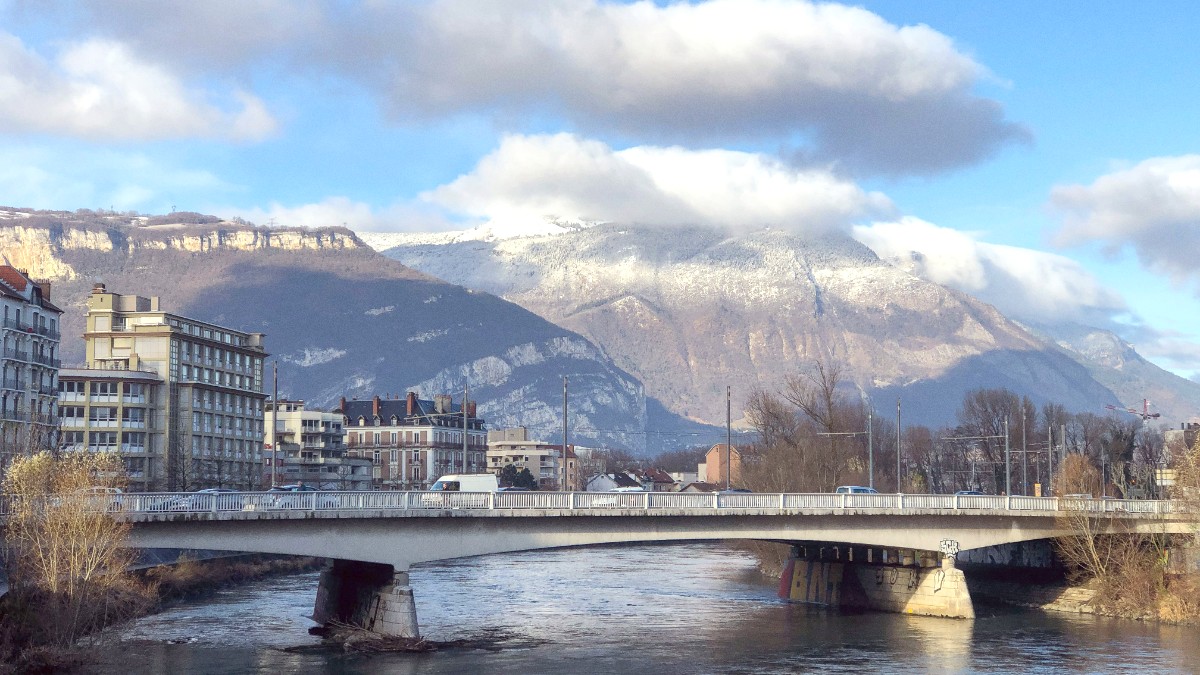
The French Alps, France
Grenoble's cuisine roots in the Dauphiné region. It features hearty, comforting dishes reflecting the mountain environment. Local food draws influences from both Savoyard traditions (to the north) and Lyon's rich gastronomic heritage (to the west). This blend creates an unique and robust flavor profile.
Local cuisine heavily features potatoes, various cheeses (especially Saint-Marcellin and Bleu du Vercors-Sassenage), and walnuts (Noix de Grenoble AOP). Mountain herbs and cured meats also play a big part. Flavors typically stay simple, robust, and try to provide warmth and sustenance.
Lunch typically runs from 12:00 PM to 2:00 PM. Dinner usually begins at 7:00 PM or later, often closer to 8:00 PM. Many restaurants close between lunch and dinner service.
A service charge usually appears included in the bill. This means tipping is not obligatory, but a small additional amount is appreciated for excellent service.
Bread always serves with meals. Place your bread directly on the table beside your main plate. Ask for "une carafe d'eau" (a jug of water) for free tap water. Bottled water is available for purchase if preferred.
This is the most famous dish of the region. It is a creamy potato gratin made with thinly sliced potatoes, milk or cream, and garlic. It bakes until golden and bubbling. Often served as a side dish, it is a meal on its own. You will find it in almost any traditional restaurant.
A hearty classic for a reason.
These walnuts hold a protected designation of origin (AOP). They are eaten plain as a snack, added to salads, or used in various desserts. Look for them at local markets.
A versatile local specialty.
Tiny, delicate square pasta resembling mini ravioli. They often serve with a cream sauce, cheese, or mushroom sauce. They offer a lighter alternative to heavier mountain fare.
A delicate local pasta.
A sweet tart featuring the local Grenoble walnuts, often with a caramel or honey base. Find this in bakeries and pâtisseries.
These are fried pastries, often dusted with sugar. They appear especially popular during the Carnival season but exist at other times too.
For a refined culinary experience, Grenoble presents several fine dining restaurants.
Numerous mid-range restaurant options situate in the Old Town and city center. These establishments serve various cuisines.
For affordable and quick meal options, several venues stand out.
You will find a range of international restaurants, including Italian, Asian (e.g., Japanese, Chinese, Vietnamese), Middle Eastern, and other global cuisines. These often concentrate around university areas and the city center.
Explore beyond French traditional food for varied tastes.
Certain districts feature specific international food clusters. A quick search online for "Grenoble [cuisine type] restaurant" will reveal locations.
University areas often hold diverse, affordable options.
Increasingly available, especially in modern or youth-oriented establishments. Look for "végétarien" or "végétalien."
Dedicated options limit. Halal meat may appear in some North African/Middle Eastern restaurants. Kosher is rare.
Growing awareness, but options can limit. Use "sans gluten." Prepare to explain needs in French.
Translation apps or dietary cards in French aid communication at restaurants.
In the surrounding countryside, some farms offer tours or direct sales of local produce, cheese, or walnuts.
Connect directly with the source of Grenoble's renowned ingredients.
This setting delivers a memorable backdrop for a meal.
The region's unique blend of mountain and urban influences creates a distinct dining identity. Enjoy traditional dishes with a contemporary twist in many restaurants.
Making reservations for dinner, especially on weekends, is a good idea. Many restaurants close between lunch and dinner service, so plan accordingly.
La Table du Bastille offers not just food but an experience with panoramic views of Grenoble and the Alps, especially stunning at sunset.
Explore specialty shops in the Old Town for local cheeses, charcuterie, and regional products. Craft your own gourmet picnic.
While the monastery is not public, tours of the Chartreuse cellars in Voiron (near Grenoble) allow a look at the famous liqueur's production.
This large outdoor market operates on Tuesday, Friday, and Sunday mornings. It offers a wide array of fresh produce, local cheeses, and charcuterie.
A true taste of local life.
A smaller, charming market in the Old Town, running daily except Mondays in the mornings. It focuses on local produce and artisanal goods.
Perfect for fresh, local ingredients.
Use search engines and review sites to locate restaurants based on cuisine type, price range, and ratings.
Download apps like TheFork (La Fourchette) for reservations and special offers, or HappyCow for vegetarian/vegan options in Grenoble.
The Grenoble Tourist Office provides current dining guides, maps, and staff recommendations for local eateries and culinary events.
When trying street food or market items, choose vendors with good hygiene practices. Opt for freshly prepared items or those kept at appropriate temperatures.